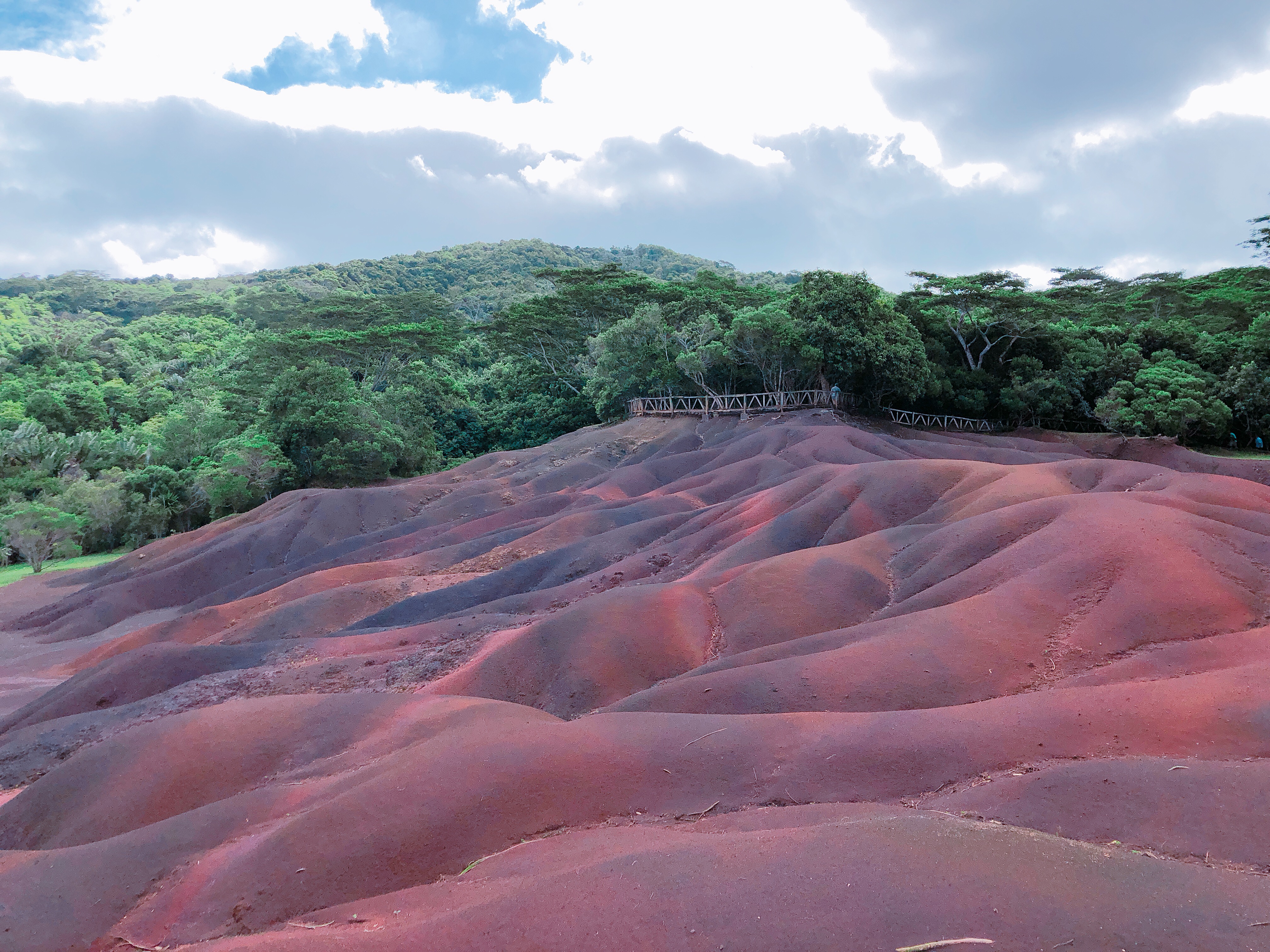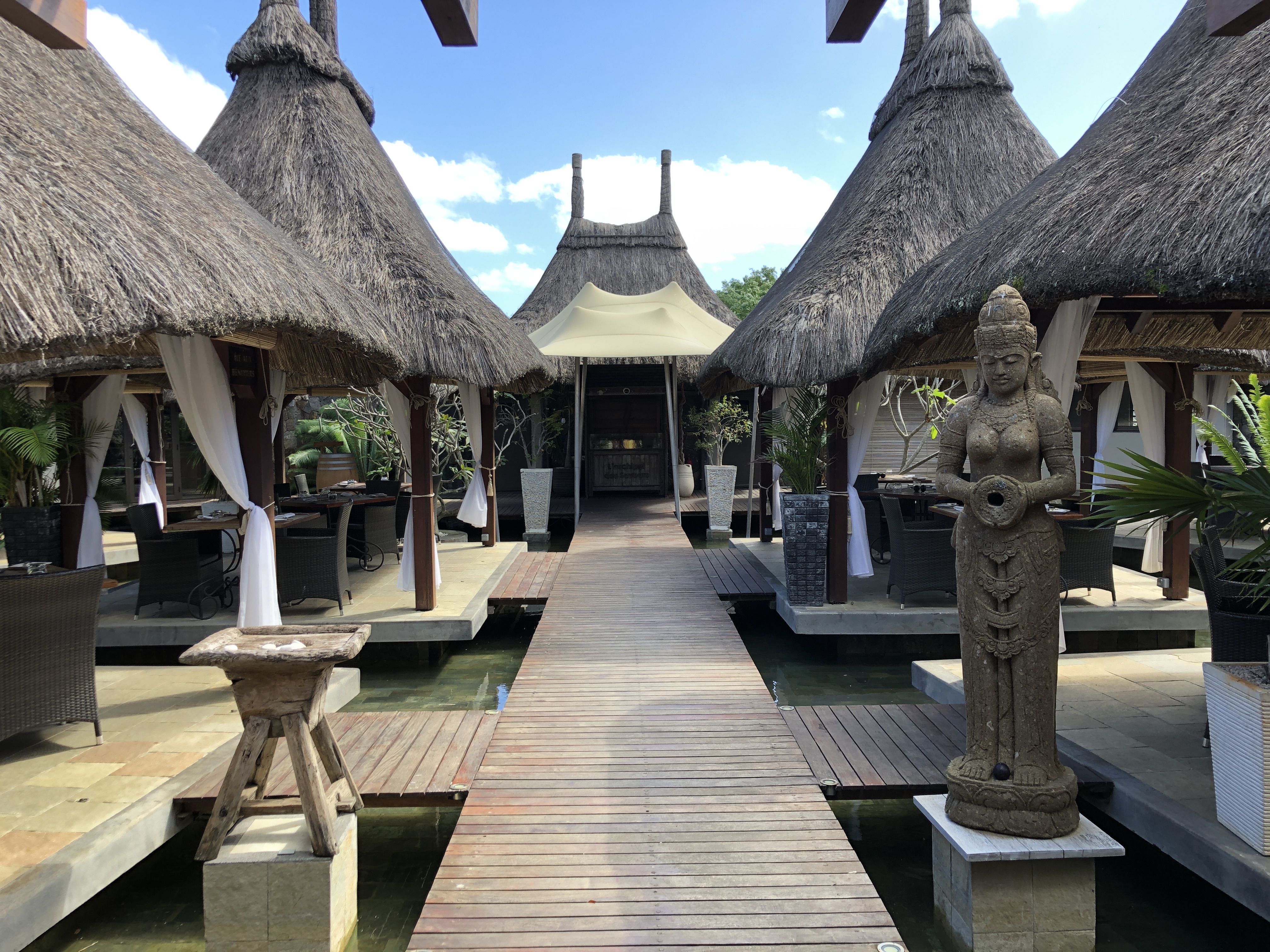

Mauritius is more than beaches and sunny islands. There is so many things to do here than in Maldives where we are restricted to the islands. In Mauritius, it is a relatively big island in the Indian Ocean so we have a chance to explore the inland attractions. For us, we rented a car for the ease of getting around. Otherwise, you can also get a chauffeur for the day to drive you around the various attractions for a fixed price.

Between Le Morne and Baie du Cap is where you will be able to witness a stunning coastal view from up above on the Maconde View Point. It was gloomy when we stopped here for photos and the strong winds almost threatened to blow us off the cliff. If you come here on a sunny day, the pictures would have been much nicer.

Located on the south coast of Mauritius, Baie Du Cap is a small, quaint village. The region is well known for its natural beauty and its wild, rugged coastlines.
Chamarel Waterfalls

At a height of over 80 meters, this is the highest waterfall in Mauritius. Also, known as one of the most breathtaking spots on the island, the Chamarel Waterfall offers a truly magnificent view where the cascading waters hit the pool below from majestic heights.

Enjoy the refreshing spray from the falls above or have a swim in the pool. Revel in the untouched beauty of this limited access location and be amazed by the sights and sounds of a true tropical rainforest and its myriad of plant and animal species that continue to thrive as a result of laborious work done by locals to protect the fauna and flora. You will find exposed volcanic rocks dating back to some 8-10 million years ago, thus representing some of the oldest lava rocks of Mauritius. The waterfall is formed by three distinct streams of water sourcing from the River Saint Denis which is nearby the village Cachette, Cascade Chamarel and La Crete.
For us, we did not opt for the 3h hike. Instead, we parked the car at the parking lot and went to the viewpoint to take some photos of the waterfall. Due to the rainy season, there was a lot of mud and silt collected by the river, so the water appears brown.
Chamarel Seven Coloured Earth
Another attraction nearby is the seven coloured earth, a natural phenomenon. The colours evolved through conversion of basaltic lava to clay minerals.

It is a relatively small area of sand dunes comprising sand of seven distinct colours (approximately red, brown, violet, green, blue, purple and yellow). Due to the tropical weather conditions, all water-soluble elements such as silicon dioxide have been washed out. The remains are the reddish-black iron- and aluminium oxides which create shades in blue, cyan and purple. The various colours developed due to the different compositions.

Since the earth was first exposed, rains had carved beautiful patterns into the hillside, creating an effect of earthen meringue. At first you’ll notice shadows on the hills, creating the illusion of different colours, but soon you realise that the colours are real and the shadows were the illusion. This is not the first time that I am seeing this, so I am not too impressed. The one in Pekanbaru was also about the same.
Besides the seven coloured earths, you also have the chance to see some giant tortoises in their natural habitats. They move really slowly and their shells are huge. These tortoises originated from Seychelles. Hope to go there some day for a visit as there is a beach literally full of these giant tortoises!

If you are in the area, check out Parc Aventure Chamarel, which offers new outdoor activities in the heart of a unique 12 hectares tropical forest.

Regardless of athletic ability, the young and not so young can roam from trees to trees, and path to path, attached to a lifeline (safety equipment). In order to fully enjoy the site’s fabulous views, kiosks have been placed overlooking the Chamarel valley, the Black River peak.
The views here are amazing and there are so many nature spots where one can get a good view of the surrounding valley or just sip coffee at one of the cafes. Due to the suitable climatic conditions, coffee beans are also grown on the slopes of Chamarel area and the coffee is selling at $10 per pack.

Caudan Waterfront
After a day of being in the mountains, it is time to head back to the city. Port Louis may not be the most cosmopolitan capital city in the world, but it does have some sights worth checking out. The Caudan is one of the oldest mall built in Mauritius. Located on the docks of Port-Louis, it includes many high-end boutiques, duty-free shops, and cheap food vendors. It also hosts two great business hotels: Le Labourdonnais and Le Suffren. The Caudan Waterfront also hosts some events from time to time, such as bazar sales, during which vendors from all across the island come to sell their home-made goods.

The Mauritius postal museum invites you to discover the major events that marked the history of the postal services in Mauritius from its origin till nowadays. Located in one of the oldest historical building in the Port Louis Waterfront, the building construction started in the 1865 and was inaugurated in 1868. Presently, the postal museum building symbolises the efforts undertaken to improve communication both locally and internationally. It also has one of the rarest stamps in the world with the dodo bird, so it is worth a visit if you are around the area.
Fee: Rs 50 for adults

The name of Le Caudan Waterfront comes from a famous figure of the past, Jean Dominique Michel de Caudan, who came to former Isle de France from Languedoc (a department in the South of France).



Walking along the streets of the old town is interesting as we got to see the different facets of life in Mauritius, from the local markets, stalls selling sugarcane juice or fruit juice, to the walking streets with souvenir shops catering to tourists.

As the Independence Day of Mauritius had just passed in March, the decorations of these umbrellas with the national colours are still hung in the old town area.


The Caudan area had recently underwent a revamp which made it more pedestrian friendly. The views of the harbour are beautiful and you can see the city being surrounded by mountains in the background.

Chinatown district

Did you know that 5% of Mauritians are ethnic Chinese? In Port Louis, there is a small Chinatown area. The district is one of the oldest Chinatowns in Africa having been built by migrants arriving as far back as the 1780s. But there has been a small Chinese presence in Mauritius since the 1600s when the Dutch bought over indentured labourers. Today, Chinese Mauritians are moving out of the area — mostly abroad.

The Jummah Mosque, the most important mosque in Mauritius, was built in the 1850s and is a striking blend of Indian, Creole and Islamic architecture – it would look equally at home in Istanbul, Delhi or New Orleans! Visitors are welcome in the peaceful inner courtyard, except on Friday and during the month of Ramadan. Surprisingly the mosque is located in the area of Chinatown, which reminds me of the harmonious diversity like in Singapore.
Domaine de Labourdonnais


If you are interested in visiting an old castle (chateau), do drop by Chateau de Labourdonnais, which serves as a museum and a rum distillery where you can have rum sampling. Mauritius is a relative newcomer to global rum markets, where long-time producers in the Caribbean are better established and enjoy an undeniable cachet. For centuries, colonial governments in Mauritius frowned on using sugar cane for rum, because refined sugar fetched much better profits, but now times have changed.

Château de Labourdonnais, surrounded by its beautiful orchards, was built between 1856 and 1859 by Christian Wiehe himself then his descendant lived there until recently. The château de Labourdonnais is a stunning colonial house that has been restored to show the lifestyle of the families who lived there in the nineteenth century. It has been converted into a museum that invites you to discover the nineteenth century Mauritian lifestyle as well as its history.

After the museum tour, it was time to try some rum. There were so many flavours to choose from and we could have unlimited tastings.

The Classic range regroups the white rums which are column distilled as well as a Classic Gold & a Spiced Gold rum. You can also taste the first XO Vintage 2010 which is a blend of multiples casks of aged rums as well as our first Single Cask 5 years Aged rum. Some of the rums produced here are award-winning on the international level.

The ageing process is done using various casks from new French oak barrels to American oak barrels. We personally enjoyed the coffee orange flavoured rum which had nice aftertones and decided to buy a bottle back home. As part of the rum tasting, there was also a small plate of gummies to neutralise the taste after each sample.

As a destination, Mauritius offers so much more than its beaches. If hiking, climbing, and other outdoor activities become more popular, the government may have an incentive to conserve more natural areas. If you are not interested in nature, then Mauritius also has something for those who prefer to explore cities and learn more about the culture.

